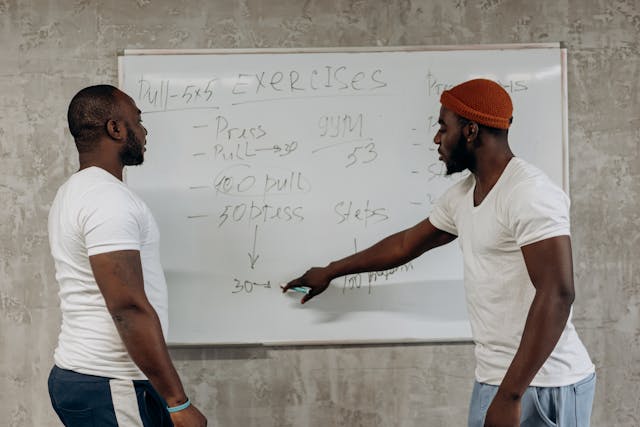
Tailoring Your Fitness Journey at 50: A Step-by-Step Guide to Success
Embarking on a fitness journey in your 50s is an empowering decision that can greatly enhance your overall well-being. However, it’s crucial to have a workout plan that is tailored to your unique needs and goals. A personalized approach ensures that you stay motivated, safe, and on track to achieve your fitness aspirations. Here’s how you can create a customized workout plan that suits you perfectly.
Assess Your Current Fitness Level
Before diving into a new exercise routine, it’s important to assess your current fitness level. This can be done through a series of simple tests or with the help of a fitness professional. Understanding your baseline will help you set realistic goals and monitor your progress. Consider factors such as your cardiovascular endurance, strength, flexibility, and any existing health conditions or physical limitations.
Set Realistic and Specific Goals
Setting clear, attainable goals is a key component of any successful fitness plan. Instead of vague goals like “get fit,” opt for specific and measurable objectives. For instance, aim to walk for 30 minutes, three times a week, or to complete a strength training session twice a week. Break down long-term goals into smaller milestones to keep yourself motivated and focused. Remember, the journey is as important as the destination.
Choose Activities You Enjoy
One of the most important aspects of a sustainable workout plan is enjoyment. Choose activities that you genuinely enjoy and look forward to. This could be anything from brisk walking, cycling, and swimming to yoga, pilates, or dance classes. Enjoying your workouts increases the likelihood of sticking with them long-term. Variety can also keep things interesting and prevent boredom.
Incorporate Different Types of Exercise
A well-rounded workout plan should include a mix of cardiovascular exercise, strength training, flexibility exercises, and balance work. Cardiovascular activities, like walking or swimming, improve heart health and endurance. Strength training, using weights or resistance bands, helps maintain muscle mass and bone density. Flexibility exercises, such as yoga or stretching routines, enhance mobility and reduce the risk of injury. Balance exercises can improve stability and prevent falls.
Listen to Your Body
As you age, it becomes increasingly important to listen to your body and respect its signals. Don’t push yourself too hard, especially when you’re just starting out. Begin with low-intensity exercises and gradually increase the intensity as your fitness improves. Pay attention to any pain or discomfort, and don’t hesitate to modify exercises or take rest days when needed. Consulting with a healthcare provider or a certified fitness trainer can provide additional guidance and ensure you’re exercising safely.
Plan for Progression
Progression is essential for continuous improvement. Gradually increase the duration, intensity, or frequency of your workouts to keep challenging your body. For example, if you start with walking for 20 minutes, aim to increase it to 30 minutes over a few weeks. Similarly, if you’re lifting weights, gradually increase the resistance as you get stronger. Keep track of your progress to stay motivated and adjust your plan as needed.
Stay Consistent
Consistency is the cornerstone of any fitness plan. Establish a regular workout schedule that fits into your lifestyle and stick to it. It might be helpful to set aside specific times each week dedicated to exercise, treating them as non-negotiable appointments with yourself. Consistency will help you build and maintain your fitness levels over time.
Seek Support and Accountability
Finding support can significantly boost your motivation and accountability. Consider working out with a friend, joining a fitness class, or participating in online fitness communities. Having someone to share your journey with can make exercising more enjoyable and help you stay committed to your goals.
Conclusion
Creating a personalized workout plan for your 50s is about finding what works best for you and making exercise an enjoyable part of your daily routine. By assessing your fitness level, setting realistic goals, choosing activities you love, incorporating a variety of exercises, listening to your body, planning for progression, staying consistent, and seeking support, you’ll be well on your way to a healthier, more active lifestyle. Remember, it’s never too late to start, and every step you take is a step towards a better you.
